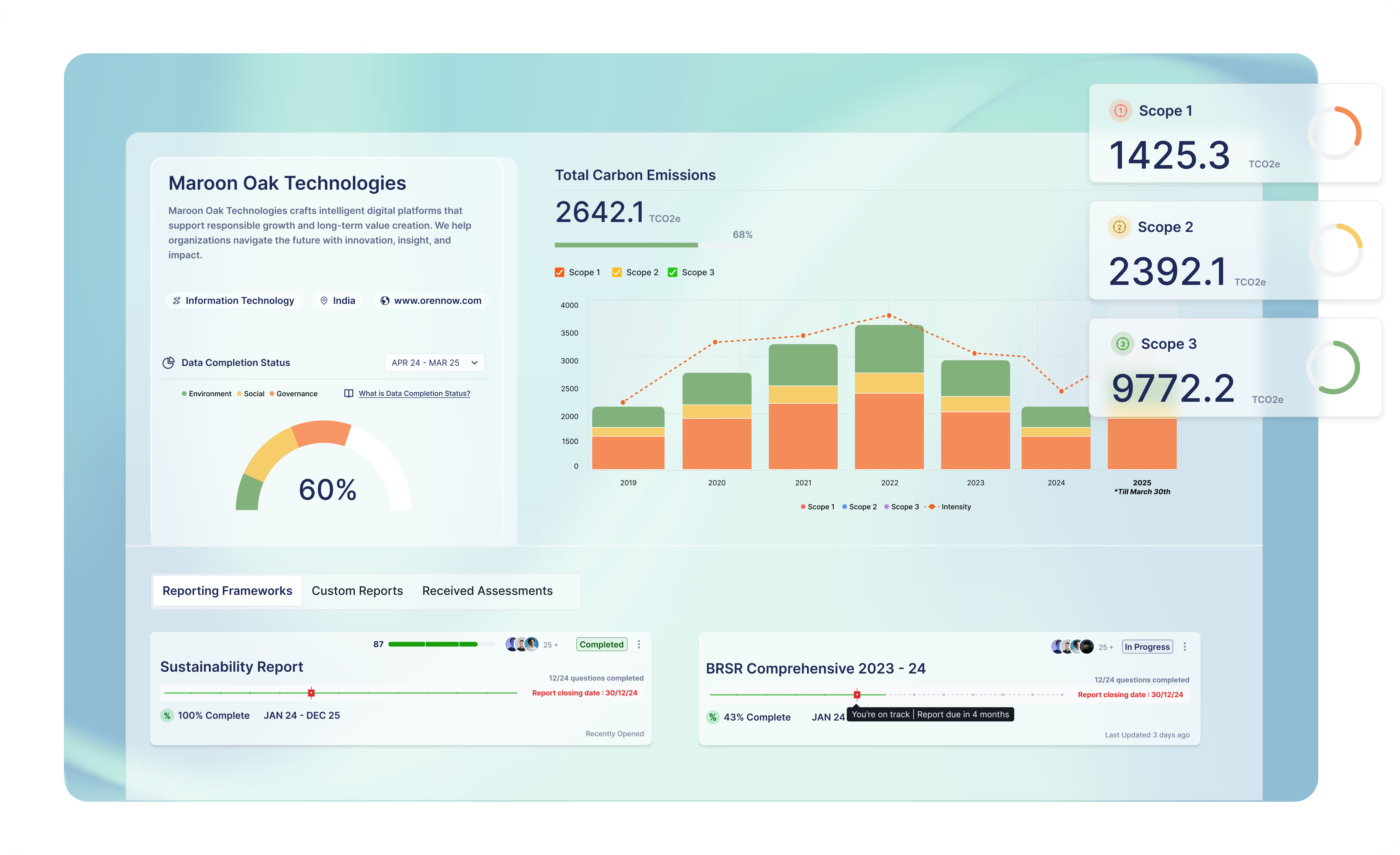Understanding ESG Maturity: A Guide to Evaluating Your Company's ESG Progress

As businesses evolve, ESG (Environmental, Social, and Governance) considerations are no longer optional but integral to sustainable success. ESG maturity reflects how well a company integrates ethical and sustainable practices into its operations and strategy. A company’s ESG maturity level signals its commitment to responsible business conduct and its ability to create long-term stakeholder value.
Assessing ESG maturity allows businesses to understand their current standing, identify strengths, address gaps, and develop a roadmap for continuous improvement. The ESG Maturity Assessment provides a structured approach to evaluating progress, benchmarking against industry standards, and refining sustainability strategies. This process helps companies proactively manage risks while leveraging opportunities to enhance resilience and drive long-term growth.
The ESG Maturity Assessment Framework
The ESG Maturity Assessment is a structured framework that enables companies to evaluate ESG performance, set strategic objectives, and drive meaningful improvements. By identifying their current ESG standing and outlining a pathway for progress, companies can evolve from compliance-driven approaches to industry-leading sustainability strategies.
Core Components of the ESG Maturity Assessment
1. Assessment and Evaluation
- Conduct a thorough review of current ESG policies, governance structures, and performance metrics.
- Focus on key areas such as carbon emissions, workplace diversity, supply chain transparency, and ethical corporate governance.
- Identify gaps and align ESG strategies with global regulations, sustainability frameworks, and stakeholder expectations.
2. ESG Maturity Levels
- Compliant: ESG is treated as a mandatory requirement rather than a strategic advantage.
- Efficient: ESG efforts are structured, with a materiality matrix to map stakeholder priorities.
- Strategic: The company has a well-defined ESG vision, with leadership driving sustainability goals.
- Leader: The company sets industry benchmarks, leveraging innovation to create value for society and stakeholders.
3. Benchmarking and Competitive Analysis
- Compare ESG performance against industry peers and best practices.
- Identify performance gaps to develop targeted improvements.
- Evaluate how ESG positioning influences investor confidence and corporate reputation.

Why ESG Maturity Matters
1. Strategic Initiative Planning
- An ESG maturity assessment helps companies prioritise ESG issues relevant to their operations and stakeholders.
- By assessing risks and opportunities, businesses can determine which initiatives require immediate attention and which can be developed over time.
2. Technology Alignment
- Companies in the early stages need foundational tools for data collection and reporting.
- Advanced companies can invest in AI-driven platforms for enhanced ESG performance tracking.
- Platforms like the Oren Sustainability Hub streamline ESG data management and reporting at all maturity levels.
3. Stakeholder Engagement
- A maturity assessment helps businesses identify key stakeholders, including employees, suppliers, investors, and regulators.
- Insights from the assessment guide targeted engagement strategies to enhance transparency and collaboration.
4. Budget Planning and Resource Allocation
- Companies can pinpoint priority areas and allocate financial resources efficiently.
- Aligning budgets with ESG goals ensures funds are directed toward high-impact initiatives while maintaining financial sustainability.
Implementing ESG Maturity in Your Company
1. Conduct an Internal ESG Assessment
- Evaluate existing ESG policies, metrics, and performance data.
- Identify industry-specific risks and opportunities.
- Establish a baseline ESG performance level for continuous improvement.
2. Determine ESG Maturity Level
- Assess where your company currently stands on the ESG maturity scale.
- Conduct peer benchmarking for industry insights.
- Engage ESG experts, such as Oren's team, for assessment and strategy development.
3. Define Realistic and Strategic ESG Goals
- Align ESG goals with corporate mission and stakeholder expectations.
- Prioritise material topics such as carbon emissions, labor rights, waste management, and corporate governance.
- Establish key performance indicators (KPIs) to track progress effectively.
4. Develop and Implement a Structured ESG Action Plan
- Define actionable steps for policy enhancements, operational efficiencies, and technology integrations.
- Allocate resources and assign responsibility to ensure execution.
- Integrate sustainability principles into governance and decision-making processes.
5. Strengthen ESG Reporting and Stakeholder Engagement
- Publish ESG performance reports aligned with recognised standards (e.g., BRSR, GRI, SASB, TCFD).
- Maintain transparency through regular ESG impact reports and disclosures.
- Utilise digital platforms like the Oren Sustainability Hub for improved data accuracy and reporting efficiency.
6. Foster a Culture of ESG Excellence
- Stay updated on evolving ESG regulations and best practices.
- Engage employees and supply chain partners in ESG initiatives.
- Establish an ESG governance committee to oversee continuous improvement and strategic alignment.
Conclusion
Advancing ESG maturity is an ongoing process requiring commitment, strategic planning, and regular evaluation. Companies that integrate ESG principles into their business strategy gain a competitive edge, enhance stakeholder relationships, and build resilience against emerging risks. The ESG Maturity Assessment framework empowers businesses to understand their current maturity level and establish a roadmap for continuous improvement.
As ESG regulations tighten and stakeholder expectations rise, companies can no longer afford to treat ESG as an optional initiative. Those that fully embrace ESG maturity will be better equipped to navigate challenges, enhance efficiency, and unlock new growth opportunities. The journey toward ESG excellence requires strong leadership, data-driven strategies, and agility to adapt to evolving sustainability demands.
Latest Blog Posts
Dive into our blog for insights on making your organization more sustainable.
Sustainability Simplified
Wherever you are in your sustainability journey, we help you advance with confidence.
Schedule a Call



.avif)

